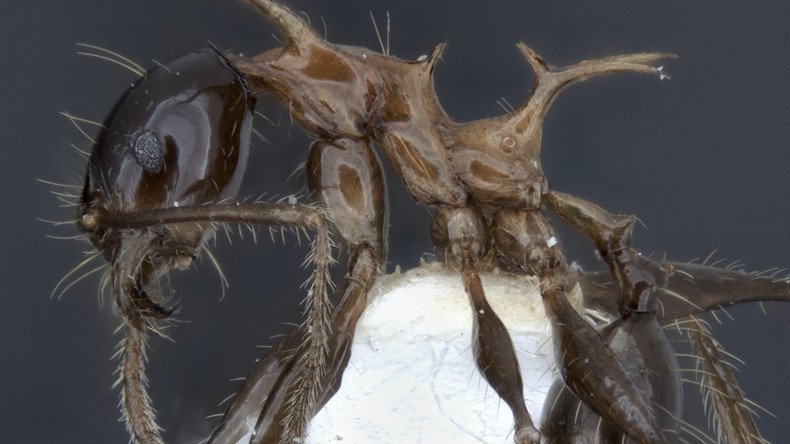Scientists discover two new species resembling GoT dragons (VIDEO)

Researchers in Japan have discovered two new species of ants, which they say resemble dragons from the TV series ‘Game of Thrones’.
A subset of the Pheidole genus, these new species were found in tropical rain forests in Papua New Guinea and Fiji. Known as “dragon ants,” the “Pheidole drogon” and “Pheidole viserion” reminded scientists of two of Khaleesi’s dragons, Drogon and Viserion, from the HBO show.
Although lacking in their fire-breathing capabilities, these worker ants have been rendered in 3D by scientists at the Okinawa Institute of Science and Technology Graduate University, and they’re just as scary as their Westeros equivalent.
Why the ants have such spikes along their backs remains somewhat of a mystery for researchers though, who assume it is for one of two reasons.
i've never seen game of thrones but those ants are pretty cool
— Chris Hutson (@chutson99) July 29, 2016
Some scientists argue that the spikes are a form of defense to ward off potential predators.
One of the study’s chief researchers, Eli Sarnat, disagrees though and believes the “muscles in the spines may help these ants to hold up their massive heads,” which Sarnat explained are an important feature as the ants have large jaws which help break up big food items.
#EverythingScience: Four New Species of Ants Discovered – Two Named after Game of Thrones’… https://t.co/edAGJ0nAeCpic.twitter.com/wa0ZG5VPfY
— r/ (@bzdt3) July 29, 2016
The discovery was published in the journal PLoS One and biologist James Waters says it helps answer some of the questions previously raised but further study will be needed.
"We're only just beginning to understand the complex relationships between form and function in insect evolution, and this study definitely advances our efforts," Waters told Christian Science Monitor.












